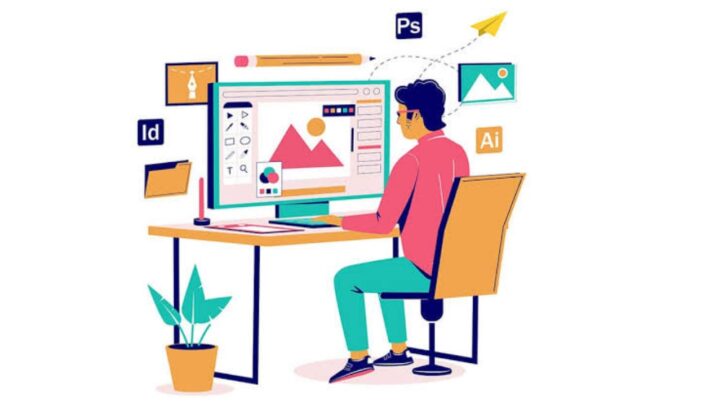Adobe Photoshop
Photoshop is undoubtedly the most well-known of the 20+ Adobe Creative Cloud apps. It is popular for its photo editing tools, and graphic designers use it to alter and enhance images and designs. Adobe Photoshop creates images primarily through the use of pixels and provides a variety of photo editing features such as cropping, color correction, image resizing, saturation, brightness, contrast, and so on. It may even blur unwanted noise in images and change shapes, sizes, and colors to make the design more aesthetically attractive. Using Adobe Photoshop talents is a process that requires practice and training.
Adobe InDesign
This graphic design expertise has been around for nearly 20 years and is still useful today. Over the years, it has appeared as the most useful tool for graphic artists. Adobe InDesign is a typesetting and desktop publishing software that succeeded Quark. The software may appear hard at first, but with proper instruction, InDesign can be quite useful and full of possibilities for graphic artists.
Adobe Illustrator
Illustrator is most likely the third most popular graphic design ability sought by employers when recruiting a designer. Illustrator, the third of the Adobe trinity, assists graphic artists in creating digital images such as logos, image illustrations, animated visuals, graphs, and so on. This graphic design program was first made available in 1987. Adobe Photoshop creates images with pixels and is based on raster graphics, whereas Illustrator works with vectors.
Typography
Did you know that there are Happy and Sad fonts? The significance of font styles extends far beyond their design. It contributes to the message and improves the design’s appearance. Typography is the art of writing in specific styles to make the text more readable and visually appealing. A design’s typography may establish brand identification, and well-trained graphic designers understand the science of typeface creation and utility.
Color Theory
Understanding color theory is one of the most important graphic design skills. Colors have a cryptic language that can have a big impact on those who see these designs. A graphic designer examines color appearance (hue), purity (chroma), and paleness/saturation. Designers can communicate with users more effectively when they use appealing color schemes and visual interfaces.
Storytelling
Becoming able to communicate the concept behind your design is one of the most critical components of being a graphic designer. Whether in-house, with customers, or with clients, a designer must be prepared to explain their ideas and stand behind their work, making storytelling a critical graphic design ability. Important components such as design inspiration, color schemes and shapes involved, typography, and so on play a leading position in this storytelling, and all of these must resonate with the idea behind the design.
Also Read: Different Graphic Designing Jobs To Explore





